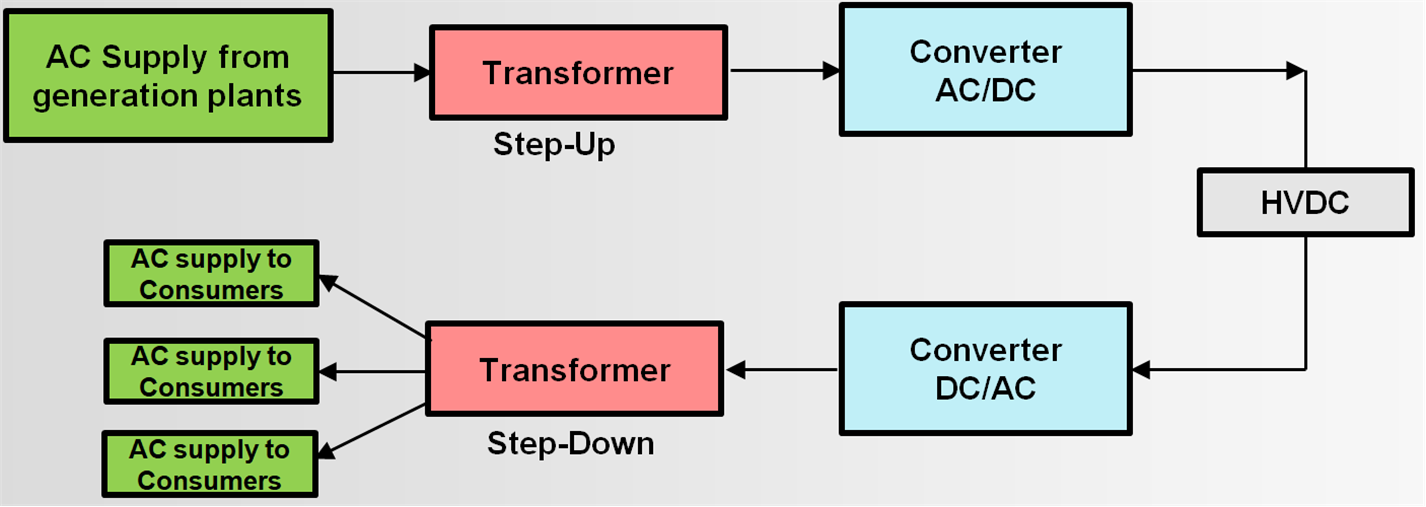SLOA289B May 2020 – September 2021 66AK2H06 , 66AK2H12 , 66AK2H14 , ADS8588H , AMC3301 , ISO224 , ISO7740 , ISO7741 , ISO7742 , LMZ30604 , SN65LVDS047 , SN65LVDS048A , UCC12040 , UCC12050
- Trademarks
- 1HVDC Power Transmission Overview and Architecture
- 2HVDC Transmission System (HVDC station)
- 3HVDC transmission station - Control and Protection (C and P)
- 4HVDC Transmission Control and Protection – System Level Block Diagram
- 5TI Solutions for HVDC Transmission Station Control and Protection
- 6Summary
- 7TI Reference Designs
- 8Additional References
- 9Revision History
1.3 Working Principle of HVDC Transmission Station
In the HVDC station, the converter transformer steps-up the generated AC voltages to the required level. The converter station takes the electric power from the three-phase AC network and rectifies it to DC, which is then transmitted through overhead lines (or cables). At the receiving end of the converter station, an inverter converts the DC voltage back to AC, which is stepped down to the distribution voltage levels at various consumer ends. Figure 1-1 illustrates the power transmission process. This technology is suitable for transmitting rated power range between 100-10,000MW.
 Figure 1-1 HVDC Power Transmission Station
Figure 1-1 HVDC Power Transmission Station